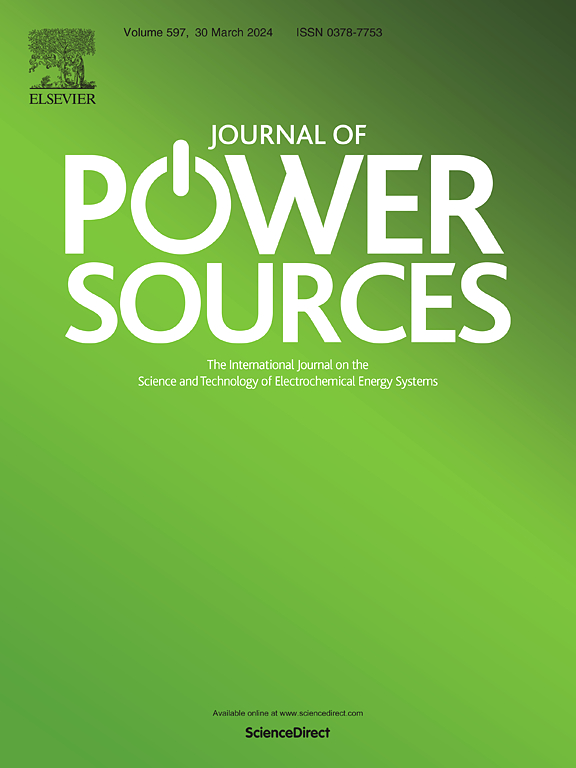Wet chemical synthesis of dianion-doped halide solid-state electrolytes for improved interface stability
IF 8.1
2区 工程技术
Q1 CHEMISTRY, PHYSICAL
引用次数: 0
Abstract
Halide Li3YCl6 (LYC) is receiving great attention due to its low raw material price and wide electrochemical window. However, its low ionic conductivity and poor lithium metal stability hinder its practical application in all-solid-state lithium batteries. Herein, a halide electrolyte Li3YBr2Cl3.7F0.3 (σ = 2.38 mS cm−1) containing three halogen elements is synthesized by wet chemistry synthesis. The interfacial protection mechanism is investigated by scanning electron microscopy and X-ray photoelectron spectroscopy, and the fluorine-rich interfacial layer is generated in situ, allowing for smaller polarization and reduction inhibition, thus making the cycling process more stable. The lithium plating/stripping test of the lithium-symmetric battery shows that the interface stability between dianion-doped halide and lithium metal is significantly improved, and the cycle test time can be stably maintained for more than 1600 h at 0.1 mA cm−2. Moreover, the LYBCF0.3 based all-solid-state battery maintains a stable discharge capacity of 70 mAh g−1 at 0.3 C for 100 cycles at room temperature, demonstrating excellent electrochemical performance. This study presents a simple and economical wet chemical synthesis route for the preparation of fluorine-doped multi-component high performance halide electrolytes and demonstrates their potential for large scale production.

求助全文
约1分钟内获得全文
求助全文
来源期刊

Journal of Power Sources
工程技术-电化学
CiteScore
16.40
自引率
6.50%
发文量
1249
审稿时长
36 days
期刊介绍:
The Journal of Power Sources is a publication catering to researchers and technologists interested in various aspects of the science, technology, and applications of electrochemical power sources. It covers original research and reviews on primary and secondary batteries, fuel cells, supercapacitors, and photo-electrochemical cells.
Topics considered include the research, development and applications of nanomaterials and novel componentry for these devices. Examples of applications of these electrochemical power sources include:
• Portable electronics
• Electric and Hybrid Electric Vehicles
• Uninterruptible Power Supply (UPS) systems
• Storage of renewable energy
• Satellites and deep space probes
• Boats and ships, drones and aircrafts
• Wearable energy storage systems
 求助内容:
求助内容: 应助结果提醒方式:
应助结果提醒方式:


